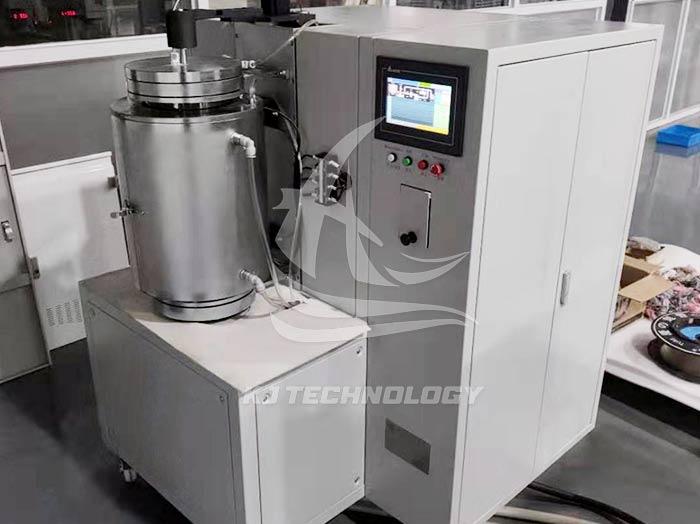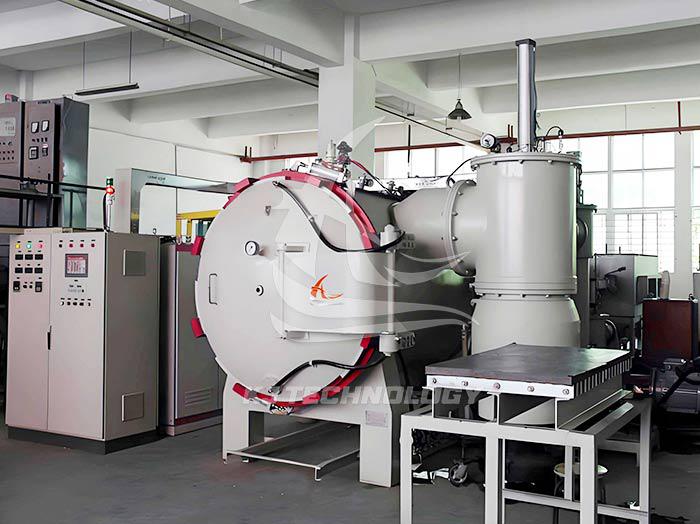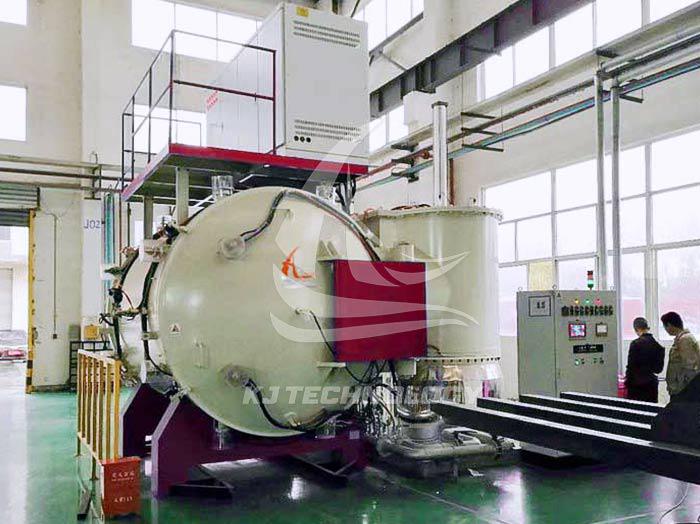Precautions for selection of pressure sintering furnace
 07-09-2025 Author: KJ technology
07-09-2025 Author: KJ technology
The selection of pressure sintering furnace should focus on the following core points, and conduct a comprehensive evaluation based on process requirements and equipment performance:
1. Matching of core process parameters
temperature range
Determine the maximum sintering temperature based on material characteristics. For example, ceramic materials such as silicon nitride and aluminum oxide require high temperatures of over 2000 ℃, while hard alloys such as tungsten cobalt typically complete sintering below 1600 ℃.
Key indicators: rated temperature (such as 2000 ℃), common operating temperature (such as 1900 ℃), temperature control accuracy (such as ± 1 ℃), temperature uniformity (such as ± 5 ℃ @ 1550 ℃).
Pressure capacity
Select pressure range based on material densification requirements. For example, hard alloys require a pressure of 6-10 MPa to promote particle bonding, while metal matrix composites may only require 3-5 MPa.
Key indicators: rated pressure (such as 10MPa), common working pressure (such as ≤ 9.5MPa), pressure fluctuation (such as ± 0.02MPa @ holding period).
atmosphere control
Determine whether a vacuum or inert gas environment is required. For example, hard alloy sintering requires vacuum (≤ 2Pa) to prevent oxidation, while bioceramics may require nitrogen or argon protection.
Key indicators: Vacuum degree (such as ultimate vacuum ≤ 2Pa), gas inlet capacity (such as maximum argon pressure of 5.2MPa), and atmosphere switching speed.
2. Equipment structure and performance optimization
Furnace size and loading capacity
Select effective loading space based on workpiece size and batch size. For example, laboratory grade equipment may have a diameter of 200mm × H200mm, while industrial grade equipment can reach a diameter of 300mm × H500mm.
Key indicators: loading capacity (e.g. 50kg), average temperature zone size (e.g. 250 × 250 × 400mm).
Heating and insulation system
Priority should be given to heating elements with high thermal conductivity and good high-temperature stability (such as graphite, tungsten molybdenum wire), and efficient insulation materials (such as isostatic pressed graphite, tungsten molybdenum screen) should be used to reduce heat loss.
Key indicators: heating power (such as 120kW), insulation effect (such as surface temperature ≤ 60 ℃), heating rate (such as 20 ℃/min).
Pressure application and control
Confirm the pressure application method (such as hydraulic, pneumatic) and control accuracy. For example, slope based pressurization can ensure a smooth increase in pressure and avoid impact.
Key indicators: pressurization method (such as hydraulic control), pressure sensor accuracy (such as ± 0.01MPa).
3. Control System and Automation
Temperature and pressure control
Choose a system with high-precision PID control that supports multi-stage heating programs (such as segmented insulation to eliminate thermal stress) and pressure temperature coordinated control.
Key indicators: temperature control accuracy (such as ± 1 ℃), pressure control accuracy (such as ± 0.02MPa), data recording function (such as USB port export).
automaticity
Priority should be given to equipment with automatic lifting of furnace covers, pneumatic robotic loading and unloading of materials, and one key start functions to reduce labor intensity and improve safety.
Key indicators: Automated operation process (such as automatic vacuuming, pressurization, insulation, cooling), user-friendly human-machine interface (such as touch screen operation).
4. Safety and Environmental Design
safety protection
Confirm whether the equipment is equipped with safety devices such as over temperature alarm, leakage protection, emergency stop button, etc., and meets the sealing requirements under high voltage environment (such as leakage rate ≤ 5Pa/h).
Key indicators: safety certification (such as CE certification), protection level (such as IP54), emergency response time (such as ≤ 1 second).
Environmental Protection and Energy Conservation
Choose equipment that adopts energy-saving technology (such as optimizing heating element layout, high-efficiency insulation materials), and confirm whether the cooling method (such as water-cooled jacket) meets environmental requirements.
Key indicators: energy consumption (such as energy consumption per unit output ≤ 5kW · h/kg), cooling water consumption (such as 2.5m ³/h), and exhaust gas treatment capacity.
5. Manufacturer Services and Costs
After sales service system
Priority should be given to manufacturers that provide long-term technical support, supply of vulnerable parts (such as heating elements and sealing rings), and regular maintenance to ensure the long-term stable operation of the equipment.
Key indicators: response time (such as arrival within 24 hours), spare parts inventory adequacy rate (such as ≥ 90%), training services (such as operator training).
Cost effectiveness evaluation
Comprehensively compare equipment performance, quality, and after-sales service within the budget range to avoid pursuing low prices and increasing maintenance costs in the later stage.
Key indicators: Full lifecycle cost (such as equipment price+5-year maintenance cost), return on investment (such as ROI ≤ 3 years).








